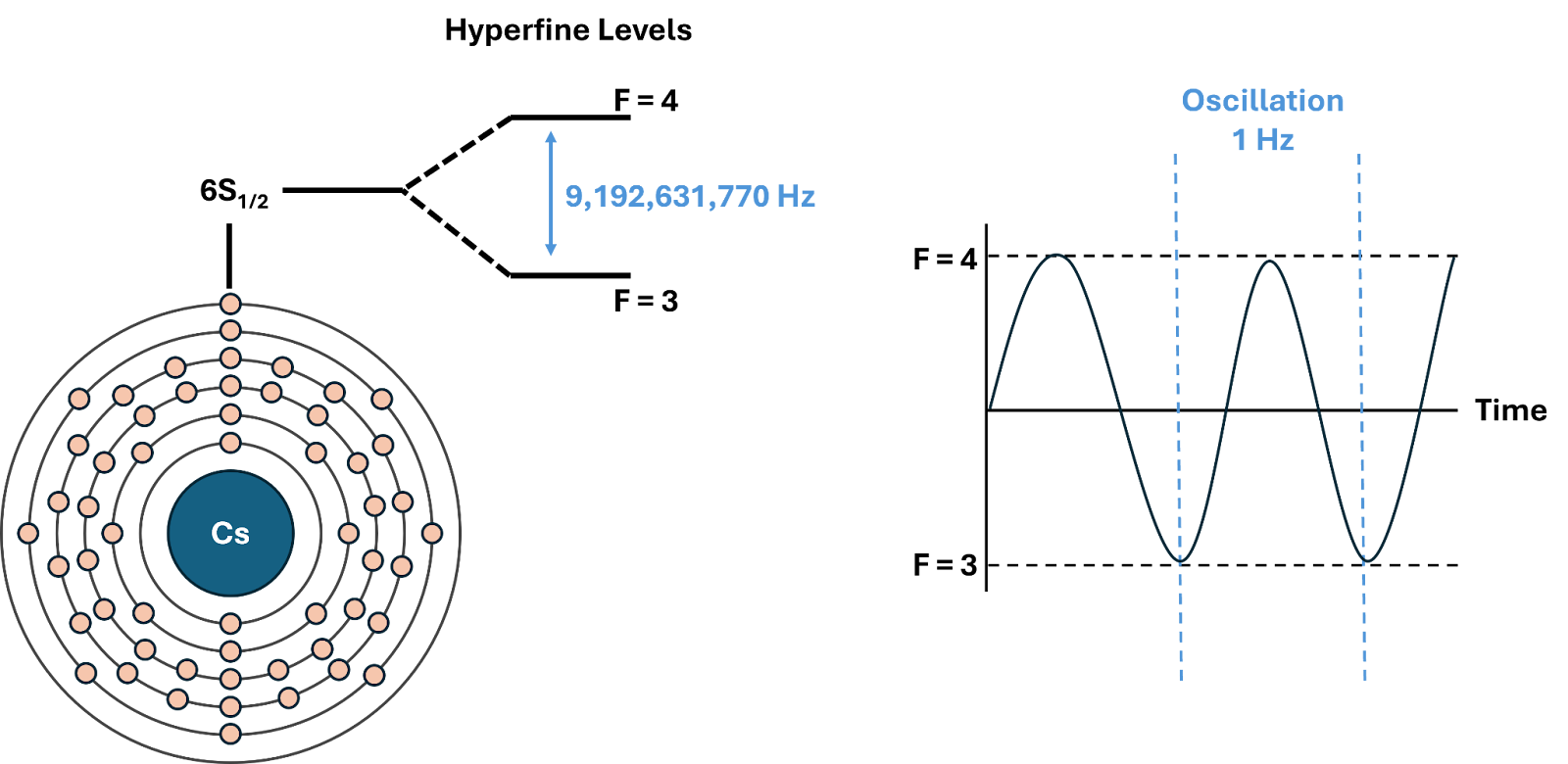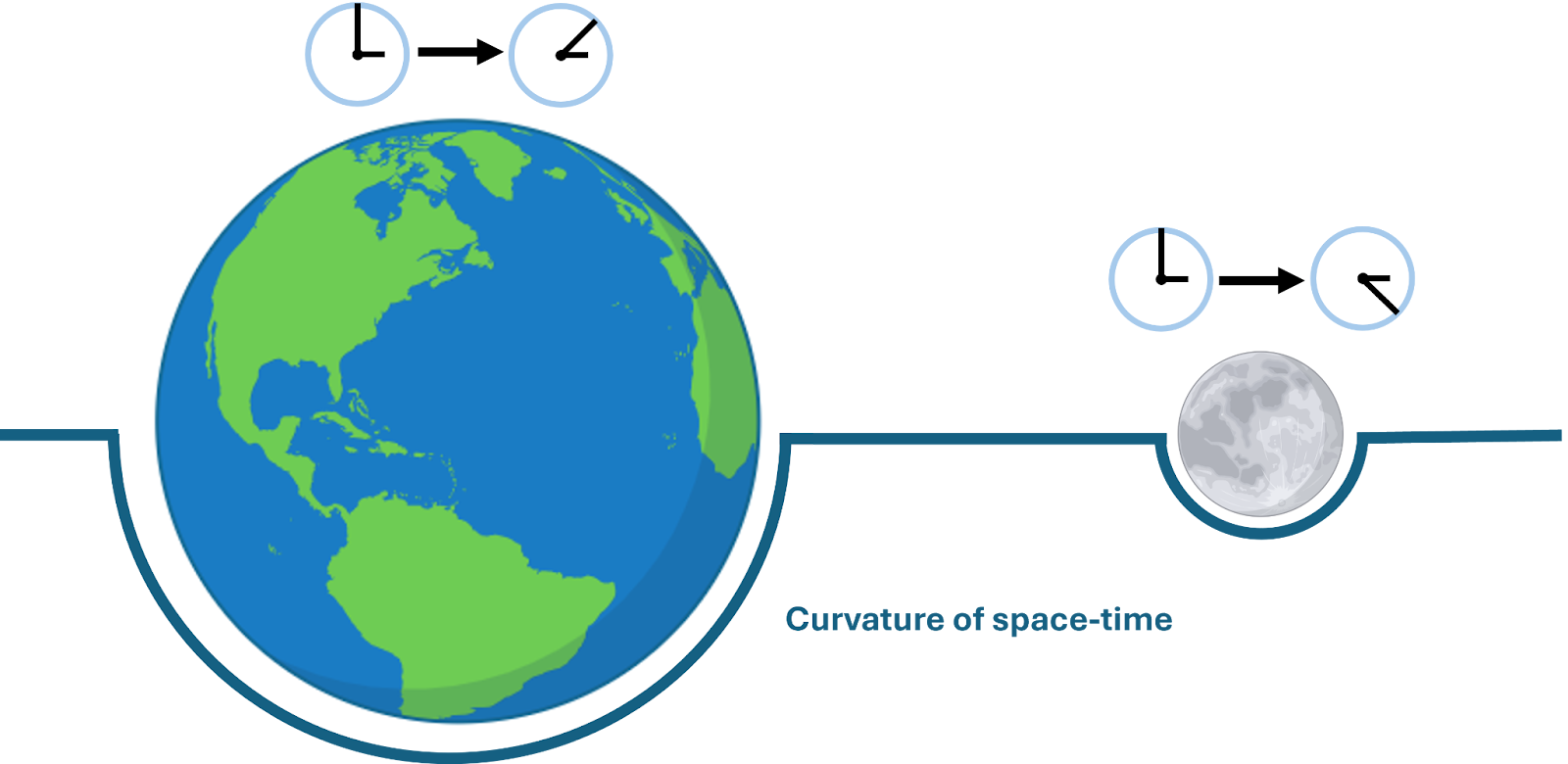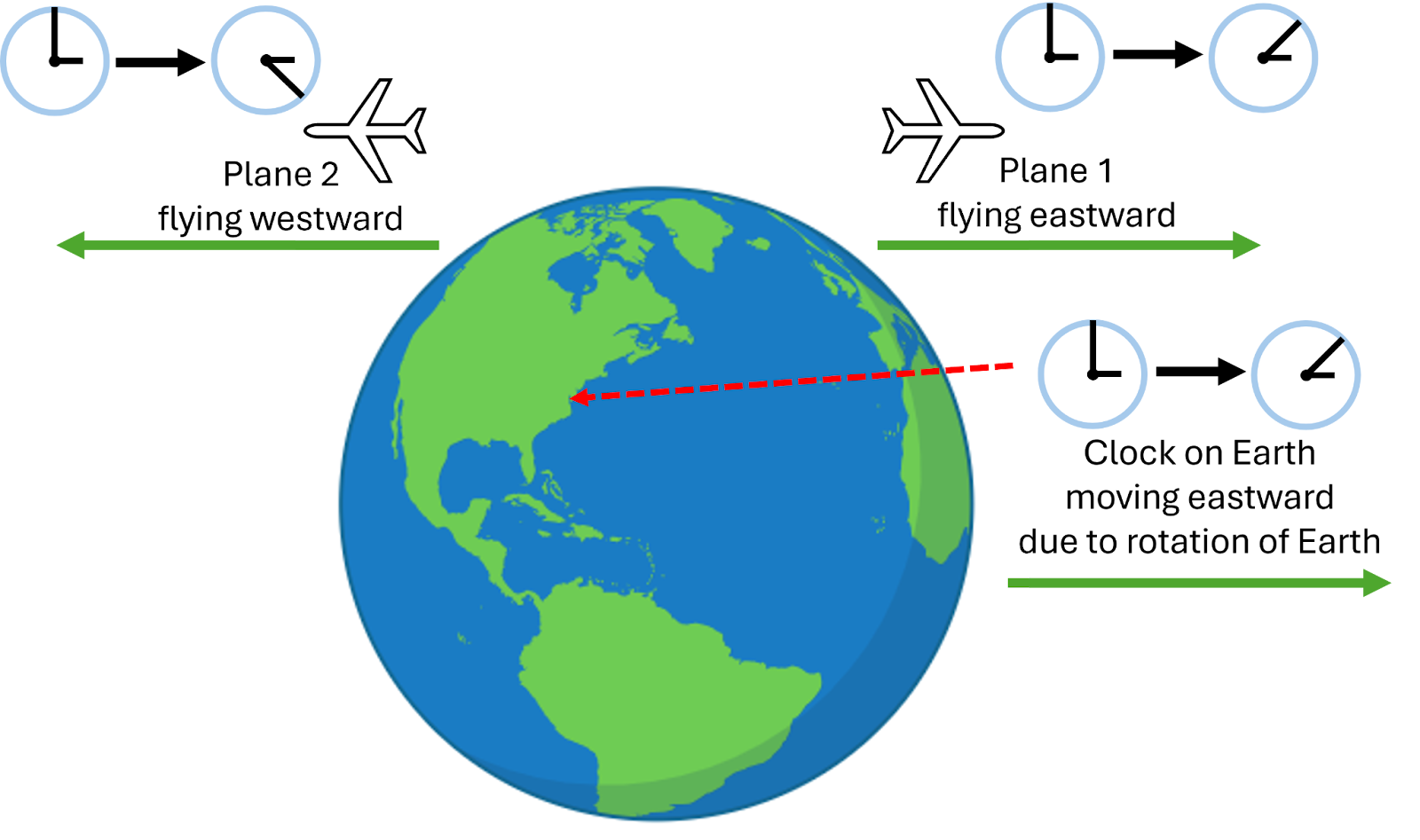by Erik Pena
Have you ever heard of the saying: “time flies when you’re having fun”? This implies that time can move at different speeds depending on the situation you’re in. While time does seem to move faster when you’re having fun, there are actually real scientific ways time can move at different speeds. We might think that time is absolute and that 1 second on Earth is 1 second everywhere else in the Universe. However, time is not that simple and is in fact relative. For example, a clock on the Moon will actually tick a bit faster than a clock on Earth. Indicating that time on the Moon moves faster than on Earth. Does this mean there’s more fun on the Moon?
Well, before we can discuss how time can be altered, we must first define a precise way to measure time. By definition, time is simply the measure of how long something is happening. Historically, time was measured using astronomical objects – like a year being the Earth’s orbital period around the sun, a month being the Moon’s orbital period around Earth, and the day being the time it takes Earth to rotate about its axis. However, these methods can be inconsistent and lack precision. Scientists wanted to set the second to a value in the universe that is fixed and will stay true for millions of years if not forever. Therefore, to give time a precise, constant and fixed numerical value, scientists have defined the unit of a second as the frequency that an electron in Cesium-133 transitions between two hyperfine ground state levels. In simpler terms, one “second” is the time that it takes for an electron in Cesium-133 to jump back and forth (oscillate) between two energy levels 9,129,631,770 times (Figure 1). Atomic clocks that use Cesium-133 are used to track for precise time.

Figure 1. Depiction of the electron orbital in Cesium-133 where the outermost electron has 2 distinct energy (or hyperfine) levels in its ground state. One oscillation between the hyperfine levels is 1 Hz and 9,192,631,770 Hz will equal 1 second of time. Figure made by author using PowerPoint.
Now that we have a precise way to measure time, why would time on the Moon move faster than on Earth? This is because of time dilation. According to Einstein’s Theory of General Relativity, gravity can have an effect on the fabric of both space and time (space-time). Therefore, the more mass an object has, the more gravity it has, and the greater its ability to warp space-time.It turns out that when an object is experiencing more gravity, the slower time will pass by that object. This effect is more specifically called Gravitational Time Dilation (Figure 2). Take for example the Earth and the Moon. The Earth has more mass and therefore imposes a higher degree of gravity than the Moon. This leads to more curving of the fabric of space-time which leads to time moving slower. One way to visualize this is to imagine having to travel through the curves. Because the space-time around Earth has more curvature, it takes more time to travel through it compared to the space-time around the Moon. Experiments have proven this to be true using atomic clocks.

Figure 2. Gravitational Time Dilation. The curvature of space-time depends on the gravity imposed by a mass. An object experiencing more gravity will have time move much more slowly compared to another object that is experiencing less gravity. Earth and Moon rendering from Biorender. Figure made by author using PowerPoint.
Other than Gravitational Time Dilation, there is another way to change the speed of time. According to Einstein’s Theory of Special Relativity, an object in motion is also subjected to time dilation. This effect is called Kinematic Time Dilation, and it states that the faster something moves, the slower a clock will tick compared to another clock that isn’t moving. In 1971, the Hafele-Keating experiment placed Cesium clocks in 1 location on Earth, on a plane flying eastward (Plane 1), and on a plane flying westward (Plane 2) (Figure 3). Both planes are flying at about the same speed. However, Plane 1 is moving in the same direction as the clock stationed on Earth’s surface because Earth is rotating eastward. What they found was that the clock in Plane 1 (the plane moving the fastest due to the addition of Earth’s rotational speed and the speed of the plane) ticked slower than the clock in Plane 2 when they compared all 3 clocks together. This experiment indicated that the faster one moves, the slower the clock will tick.

Figure 3. Kinematic Time Dilation. The Cesium clock on Earth stationed in Washington D.C. is moving eastward because of the rotation of the Earth. Plane 1 with a cesium clock is flying eastward and Plane 2 with another cesium clock is flying westward. Plane 1 and Plane 2 are flying at the same speed. Plane 1 is moving in the same direction as the Clock on Earth while Plane 2 is moving in the opposite direction. Earth and Moon rendering from Biorender. Figure made by author using PowerPoint.
The effects of time dilation are small – a clock on the Moon only ticks 57 microseconds per Earth day faster than one on Earth, but this can have profound effects on our lives and changes how we perceive time and reality. Take into consideration GPS satellites that are moving incredibly fast around Earth and are experiencing less gravity. GPS satellites have to take into account this time dilation, or else we would never be able to determine our precise location on the road and the time it takes to get to a destination. The concepts of space and time are constantly evolving and we are still trying to make sense of the universe. However, as stated by astrophysicist Neil deGrasse Tyson, “the universe is under no obligation to make sense to you”.
